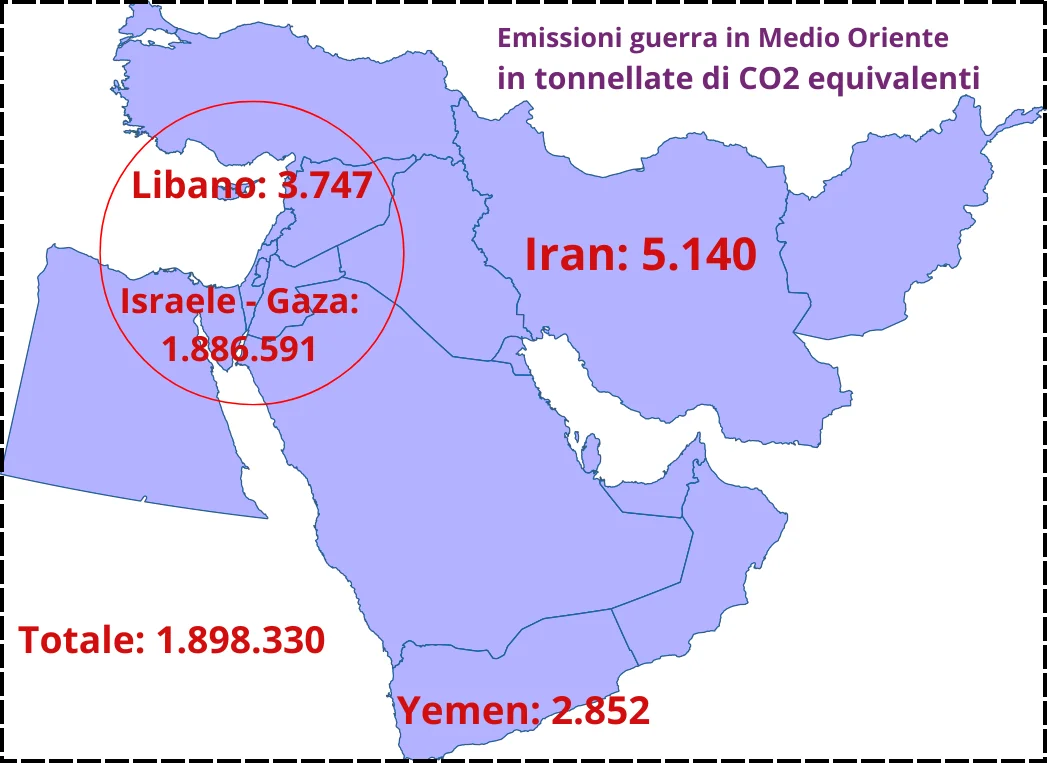The destruction and potential reconstruction of Gaza may have caused, and could still cause in the future, a total of over 32 million metric tons of carbon dioxide equivalent.

By Erminia Voccia
Academic study links gaza war to unprecedented carbon emissions
A new study by British and American university researchers has estimated the carbon footprint of the ongoing war in Gaza. Broadening the scope, the team also calculated emissions from related military operations in Lebanon, Iran, and Yemen. This research is part three of a wider investigation into the climate impact of the conflict.
Crucially, the study emphasizes the urgent need for mandatory reporting of military emissions under the United Nations Framework Convention on Climate Change. Currently, no country is required to disclose to the UN the carbon footprint generated by warfare or military activity. What is happening in Gaza undermines not only human rights in the region but also across the globe, as war contributes significantly to the worsening of global warming.
The Gaza carbon footprint
The research estimates that direct emissions from the war have reached nearly 1.9 million metric tons of CO₂. Measured over 15 months, from October 2023 to January 2025, this figure exceeds the annual emissions of 36 countries. When emissions from Hamas’ tunnel construction and Israel’s anti-terror “iron wall” defense barrier are added, the total surpasses the annual footprint of the 41 lowest-emitting countries worldwide.
Furthermore, the carbon footprint from the reconstruction of Gaza and buildings destroyed by Israeli airstrikes in Lebanon is nearly equivalent to Croatia’s entire annual CO₂ emissions.
Researchers analyzed all phases of the war’s emissions, including military preparation, active conflict, and post-conflict reconstruction. Their findings show that the destruction and eventual rebuilding of Gaza could result in more than 32 million metric tons of CO₂-equivalent emissions, placing it above the annual emissions of 102 nations.
The construction of Hamas’ underground tunnels and Israel’s “iron wall” surveillance infrastructure, designed to detect militant movement using cameras and underground sensors, is estimated to have generated 557,000 metric tons of CO₂ emissions.

Read the full study on the Gaza war’s carbon footprint.
Read also: “Extreme weather events drive global food crisis alongside wars and displacement“












